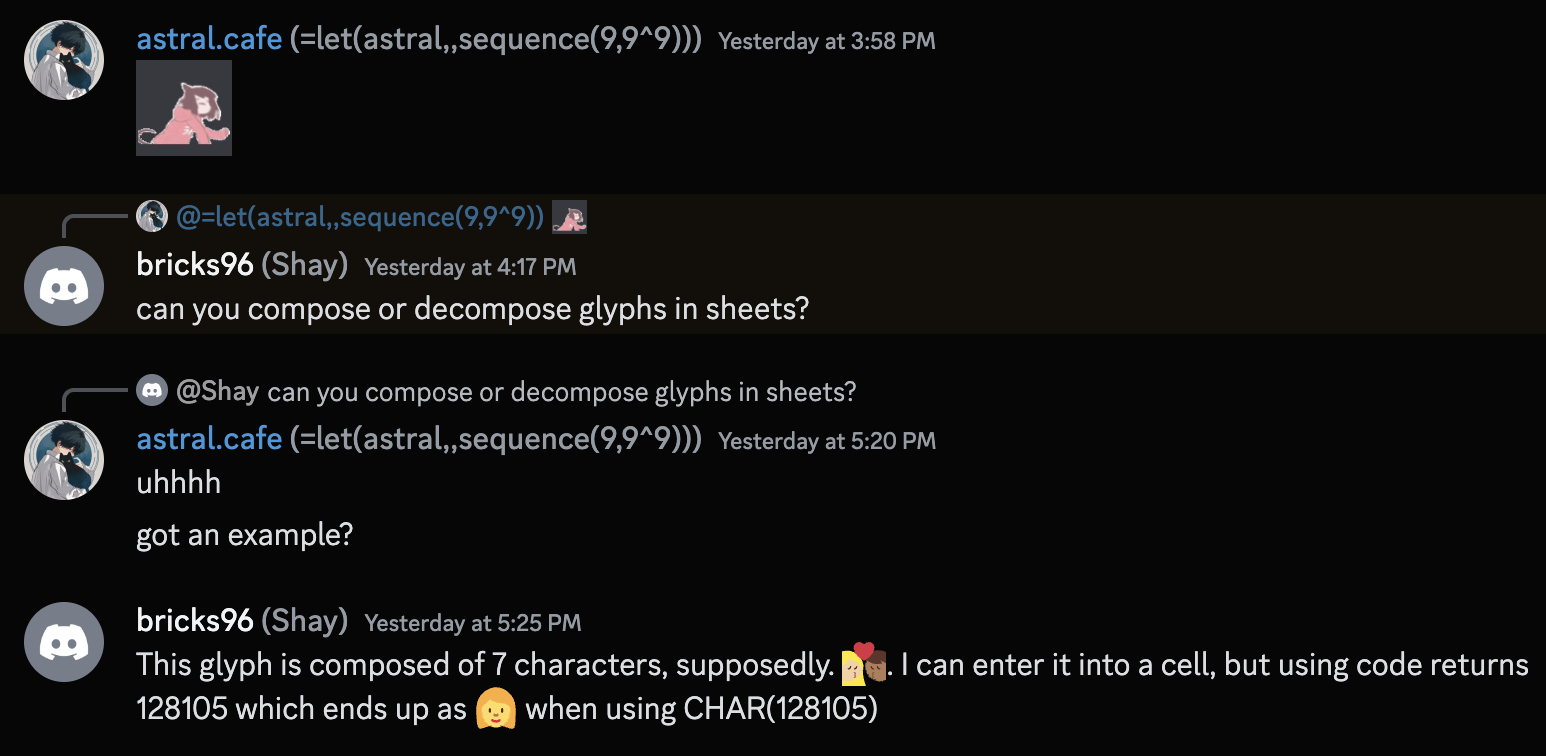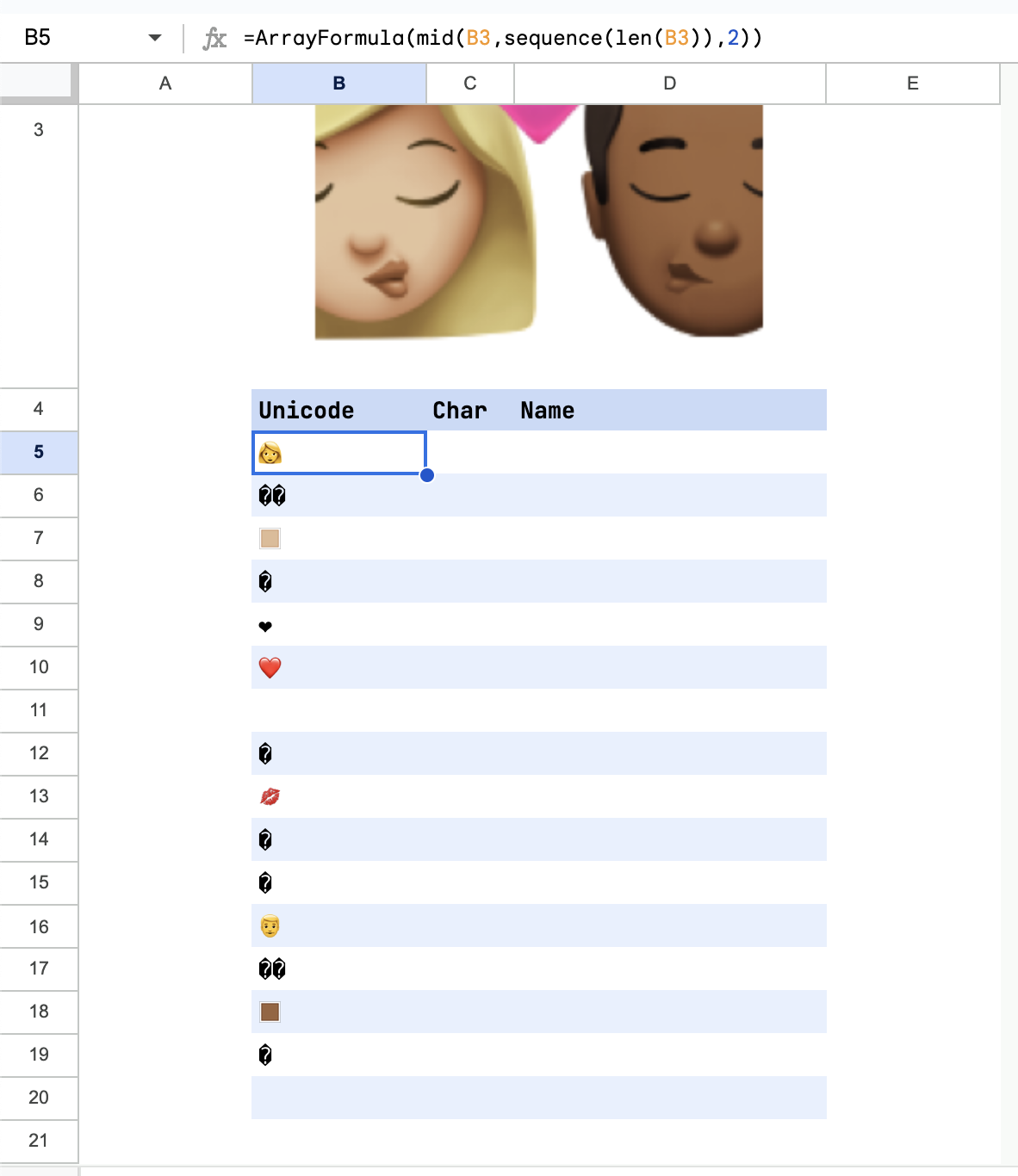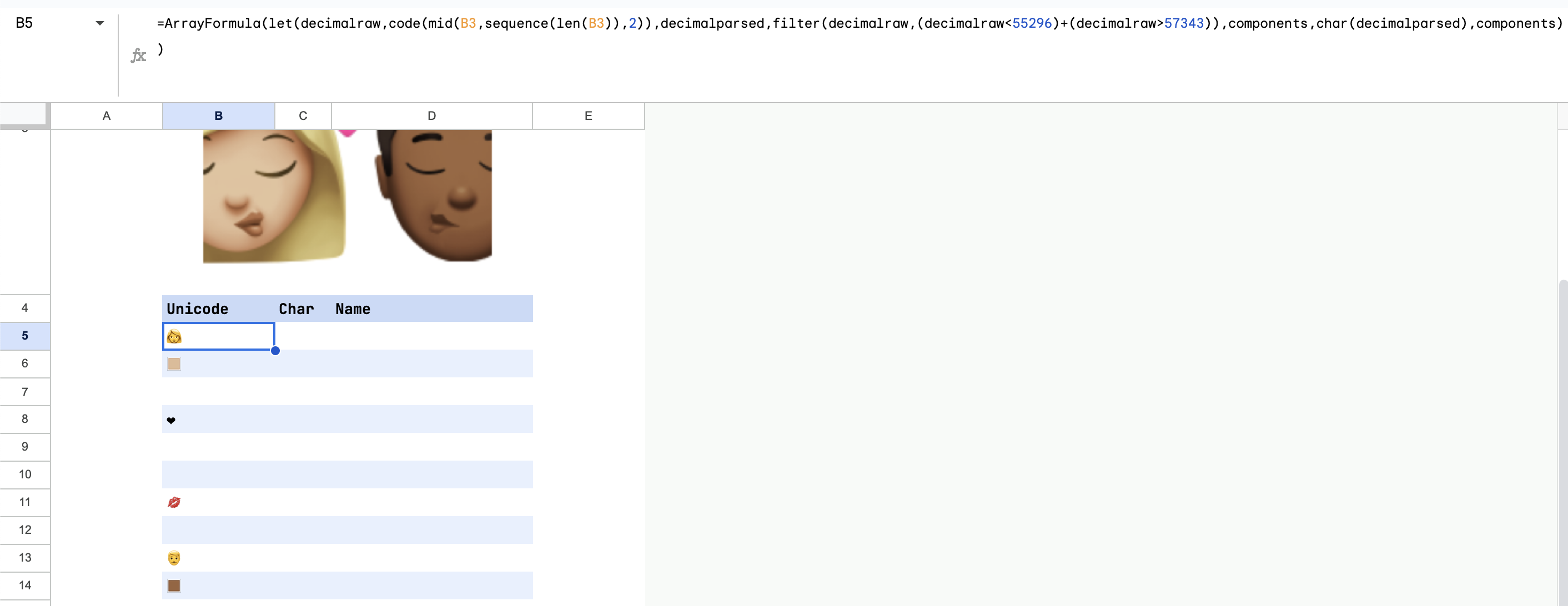I first came about this when Shay asked a question about Unicode glyphs in the Community Discord.

As Shay notes, some glyphs, such as 👩🏼❤️💋👨🏾, are actually composed of several characters. This makes it quite difficult to work with in Google sheets, as it won't 'work' with CODE and CHAR without parsing it. So, how do they work?
There are a couple of parts to it. The first is that human emojis can all have Fitzpatrick emoji modifiers, which modify skin color based on the Fitzpatrick scale. By simply putting a Fitzpatrick emoji modifier after a human emoji, it will apply that skin tone to the emoji.
The second element is that certain combinations of emojis can be combined into a single glyph. The one above is a combination of four emojis: 👩, ❤, 💋, and 👨. By using another character, called a zero width joiner (ZWJ), we can combine them into one glyph. There are therefore four distinct elements in the original emoji:
U+1F469 (WOMAN) + 1F3FC (EMOJI MODIFIER FITZPATRICK TYPE-3)
U+2764 (HEAVY BLACK HEART)
U+1F48B (KISS MARK)
U+1F468 (MAN) + 1F3FE (EMOJI MODIFIER FITZPATRICK TYPE-5)
So, we know theoretically how to decompose the emoji, but how can we actually do it in Google Sheets? We can start by getting each individual character. LEN and LENB on the glyph returns 15 and 30 respectively, which means that each character is two bytes long. Thus our first step should be to split the glyph into two-byte parts:

We can already see each element present, but there's also a number of junk characters. We can get rid of them by filtering out every decimal code within the surrogates blocks:

And that's it! These are all of the components, including the ZWJ characters I mentioned before. To get the original glyph, just use JOIN and voila! A full decomposition/composition pipeline for Unicode glyphs.
You can find a link to a sheet showing the full process here.
Additional sources: